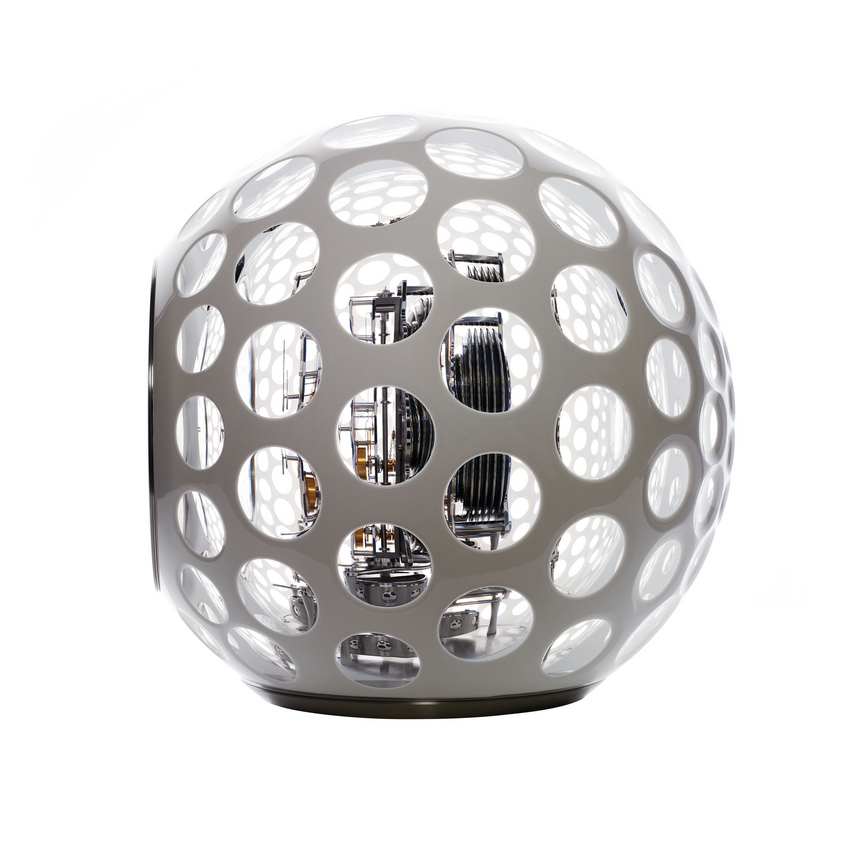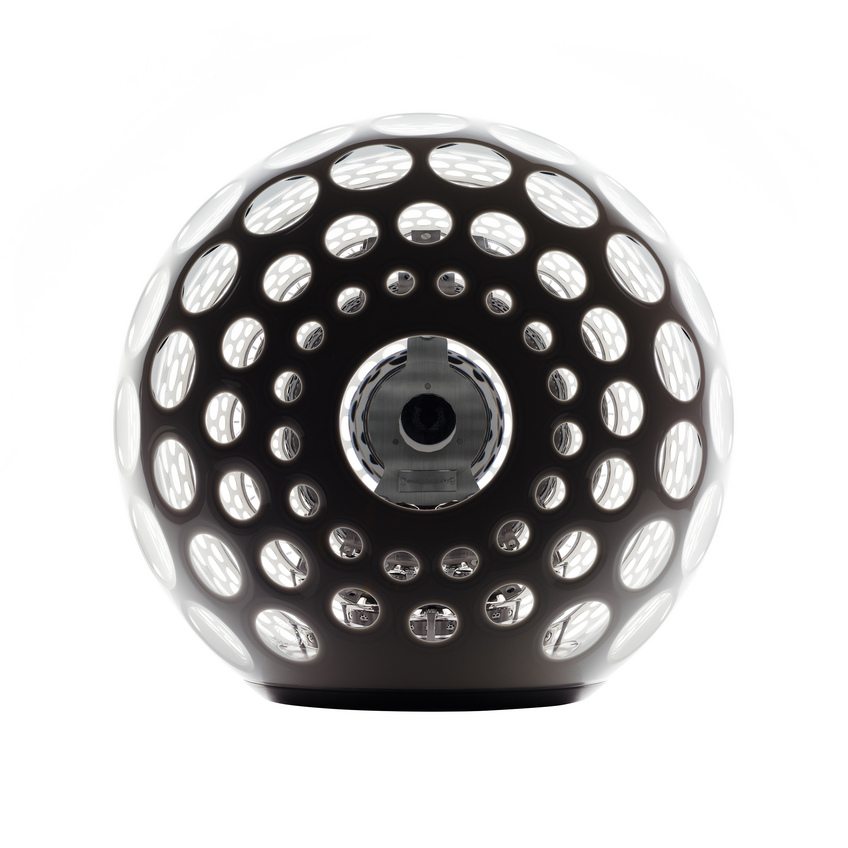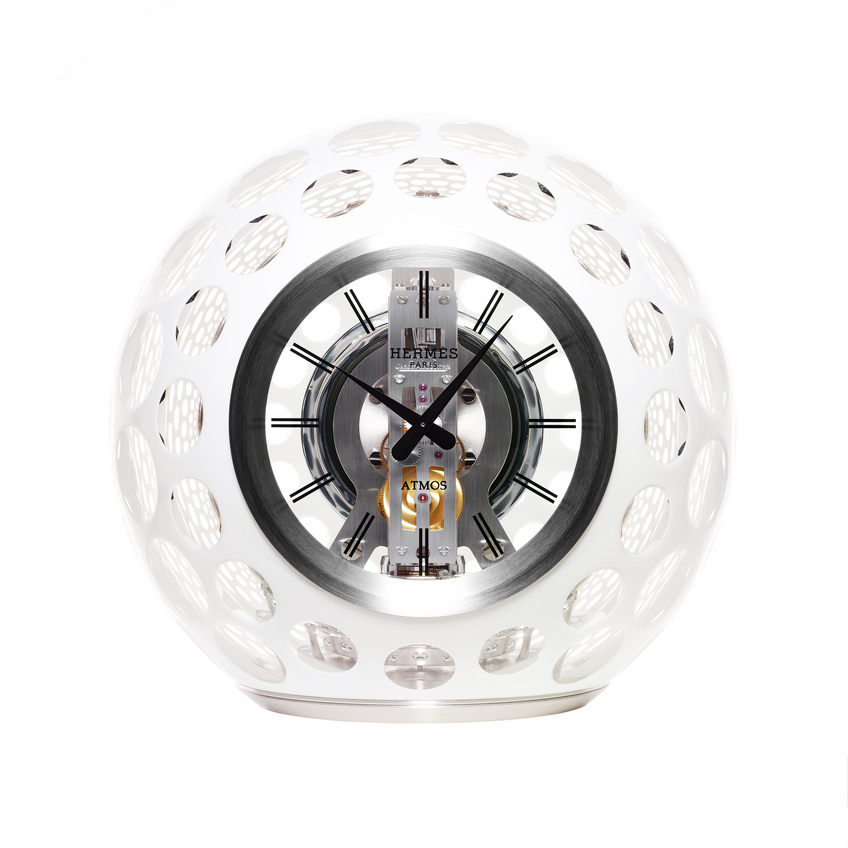
The ATMOS Hermès Clock
The ATMOS Hermès Clock
The result of the collaborative effort of Hermès, Jaeger-LeCoultre and Les Cristalleries de St. Louis, the Atmos Hermès clock is a striking demonstration of the fact that time is a true ally: one that has enabled the three Houses to combine their expertise in order to create this 176-piece limited edition crystal clock that quite literally lives on air.
Transparency rubs shoulders with opalescence, glass meets metal, artistic craftsmanship combines the uncompromising nature of metal with the fragile vulnerability of crystal: such are the defining characteristics of the Atmos Hermès table clock. By giving substance to an immaterial reality, it forges a strong bond between humankind, its environment and an eternally intriguing principle: that of time.
ENCOUNTERS BORN OF TIME
Expertise carefully refined over the decades; a thirst for innovation; a philosophy based on high standards: all of the Houses united in crafting the Atmos Hermès clock share the same values, including, first and foremost, a vision of time inextricably bound up with hand workmanship often referred to by the French word “bienfacture” and best translated as fine craftsmanship.
The astonishing crystal sphere thus houses a unique, almost perpetually moving mechanism developed by the Manufacture Jaeger-LeCoultre. Since 1928, the mechanism of the Atmos clock fascinates by its exceptional mode of operation with no battery, no electric current and no winding. It lives on air by means of an ingenious principle: a hermetically sealed capsule containing a mixture of gases that expands when the temperature rises and contracts when it drops. Connected to the mainspring of the clock, the capsule acts like a concertina or a pair of bellows, thereby constantly winding the mechanism. It is so sensitive that a one-degree temperature difference is enough to power it for 48 hours. Its balance oscillates just twice a minute rather than the average 300 times of a classic wristwatch, which consumes 250 times more energy than an Atmos clock. The 190 parts that compose this clever construction are precision-assembled within the Manufacture.
Pursuing this demanding hand-crafted approach, Hermès entrusted Les Cristalleries de Saint-Louis glassmakers with creating the astonishing exterior of this clock: a crystal globe made using the so-called doublé or double overlay technique, which consists in coating layers of glass over each other, including a coloured one. Within the company, only six master glassmakers have the mastery and experience required to perform this task.
First of all, the glassblower uses his blowpipe or gathering iron to collect the molten white enamel and fashions it so as to create a ball known as a gather; he then blows short puffs of air into this mass, all the while regularly heating it; before working it further using a mailloche or shaping block, a ladle-like wooden tool used to shape the glass into a glass bubble or parison. This first stage of production is rendered even more difficult by the opacity of the material that prevents the artisan from seeing the various layers of the enamel. In parallel, four master glassmakers prepare a lightcoloured glass mass using the shaping block and heat it to give it a spherical shape.
Then comes the overlay operation: the glassmaker uses the tip of his blowpipe to detach the white enamel parison, into which another master glassmaker pours the light-coloured glass. The two layered materials are then worked together and placed in a mould that is then blown to form a sphere measuring around 30 centimetres in diameter. The latter is placed in an annealing oven that serves to progressively cool it down in order to avoid the glass shattering. Once cooled down, the sphere that now weighs around ten kilos is perforated in the spot where the mechanism will be inserted. After this, using previously drawn markings, it is cut so as to reveal transparent pearl-like beads, and then polished to create subtle light effects.
It is thus within this subtle blend of opalescence and transparency that the clock mechanism is fitted, thereby composing a rare object which represents the quintessence of the craftsmanship spirit. For while the Atmos clock counts off the minutes and hours, it represents, first and foremost, the time dedicated by the artisans: years of apprenticeship and patiently acquired expertise, the time required for the mastery of each of these remarkable and singular skills.
TIME BORN OF ENCOUNTERS
Thierry Hermès, a harness-maker, set up business in Paris in 1837. The Maison has developed steadily ever since and now exercises 14 different métiers or skills: leather goods-saddlery, men’s and women’s silks, men’s and women’s ready-to-wear clothing, perfumes, diaries, hats, shoes, gloves, enamel, art of living, tableware, jewellery and watchmaking.
In 1928, the first Hermès watches were presented in the store at no. 24, Faubourg Saint- Honoré. At the time, Hermès placed its signature on “timepieces” that it created in collaboration with the greatest Swiss watch manufacturers including Jaeger-LeCoultre – the firm that would later equip Hermès clocks with its Atmos mechanism.
In 1978, the La Montre Hermès workshops were set up in Switzerland, thereby confirming the company’s dedication to high standards and its passion for precision – two qualities that enabled it in 2012 to launch its first models equipped with its own Manufacture- made mechanisms.
In an era when Swiss watchmaking was still structured around small cottage industrytype workshops in private homes, Antoine LeCoultre and his son Elie decided to unite under one roof the many professions involved in making watches. LeCoultre & Cie thus became the first full-fledged “Manufacture” in the Vallée de Joux. It now houses the over 180 skills required to develop and produce the most prestigious timepieces in their entirety. Engaged in a tireless quest for excellence supported by a unique spirit of invention, Jaeger-LeCoultre continues to perpetuate the tradition of Grande Complication models through a succession of extraordinary creations: the Atmos Mystérieuse (2003), Gyrotourbillon 1 (2004), Reverso grande complication à triptyque (2006), Master Compressor Extreme Lab 1 (2007), Reverso Gyrotourbillon 2 (2008), Duomètre à Grande Sonnerie (2009), Master Grande Tradition Grande Complication (2010), Reverso Répétition Minutes à Rideau (2011), and the Duomètre Sphérotourbillon (2012).
Through a steady stream of inventions and rediscoveries, refined techniques and artistic creations, Les Cristalleries de Saint-Louis has been producing glassware creations since 1586. Filigree glass, glass dyed in the mass, pressed (pattern) glass, handblown glass, hand-carved, engraved and decorated glass; opaline glass or double or triple-overlaid glass. Each model is crafted by master glassmakers and master glasscutters who are custodians of irreplaceable expertise: that which is required to tame an incomparably dense, limpid, sonorous and luminous material born of a ball of fire and of human breath. Les Cristalleries de Saint-Louis has been part of the Maison Hermès since 1989.

